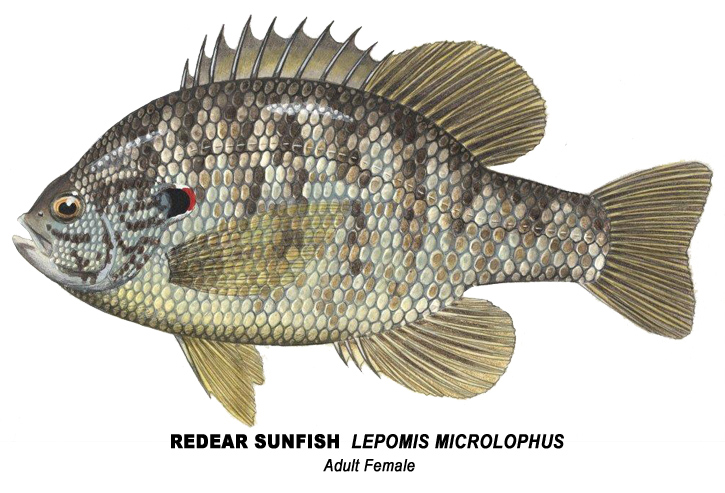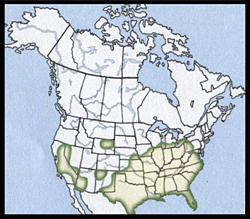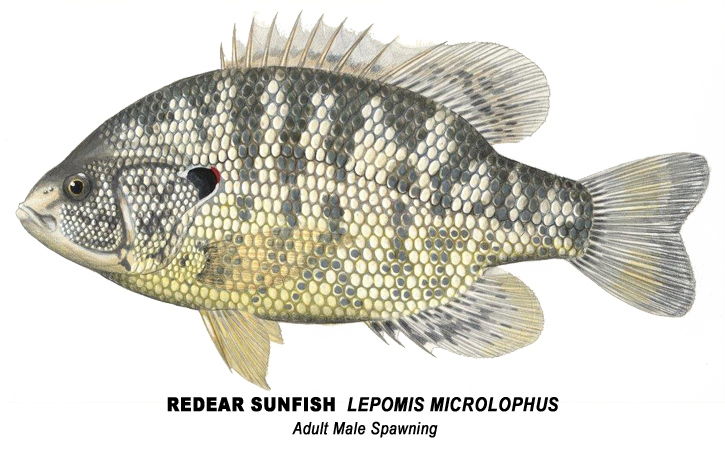Redear Sunfish, January 2015, Fish of the Month!
 Redear Sunfish
Redear Sunfish
Lepomis microlophus
Local Names:
Yellow bream, Strawberry bass, Stumpknocker, Shellcracker, Georgia bream
Average Size:
6 to 10 inches
Distinguishing Field Marks:
(See the illustration.)
-
The Redear sunfish is only moderately deep bodied, much less so than the Bluegill or Pumpkinseed sunfishes.
-
Both males and females have prominent narrow vertical bars on their sides.
-
The opercular (ear) flap is small with a black center and a white outline with a distinctive red center.
The mouth is of moderate size with its upper jaw extending back to the mid-point of the eye.
The anal fin has 3 spines.
The pelvic fins each have 1 spine and pointed tips.
The pectoral fins are long and have pointed tips.
North American Range:
Map to the right shows approximate range in North America.
Diet:
Aquatic invertebrates, especially snails, immature aquatic insects, and the eggs of other fishes.
Biology:
Another of our small American sunfishes, the Redear sunfish spawns in late spring to early summer at water temperatures of 66 to 70 degrees F. At this time, males clear nests on sand or mud bottoms, often near vegetation. After nest building, females enter the nesting territories and are courted by the males with their swimming in circles around and over their chosen mate.
Spawning takes place in a manner typical of this family with pairs swimming in circular patterns over the nest and then the females entering the center and turning onto one side as the males remain upright with their vents in close proximity. Eggs are released and fertilized in small batches interspersed by more circular swimming. Females may breed with more than one male in different nests. The males fan the incubating eggs to aerate them and continue to protect the newly hatched young for several days.
After spawning, Redear sunfish move into deeper water or take shelter in dense near-shore vegetation.
Fly Fishing for Redear Sunfish:
You're very unlikely to seek them, but, within their rather wide range, you may well find them. You'll find them in the weedier portions of typical still water small sunfish habitat. Because of their dietary preferences, Redears are not likely to be the fly-fisher's first choice of sunfish quarries. We've included them here so that, if you do happen to get one or two to hand, you'll know what you've got.
Significance to Humans:
Minimal. Although they tend to be larger than the other small sunfishes, they are more difficult to catch and for this reason are not often sought by anglers. Like all the sunfishes, the Redear makes excellent eating.
Status:
Maintaining.







